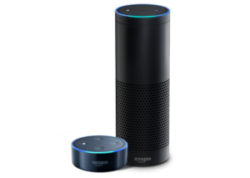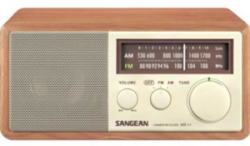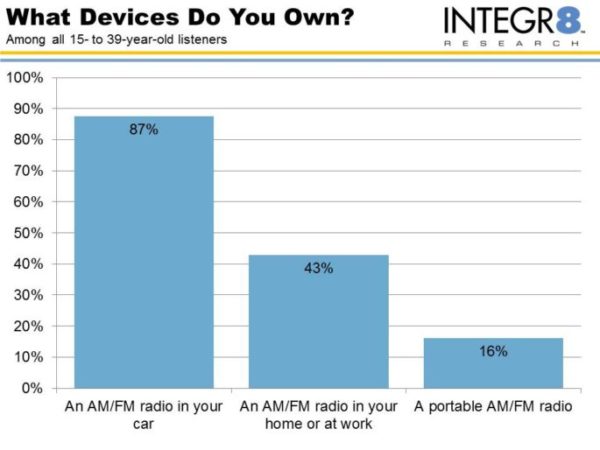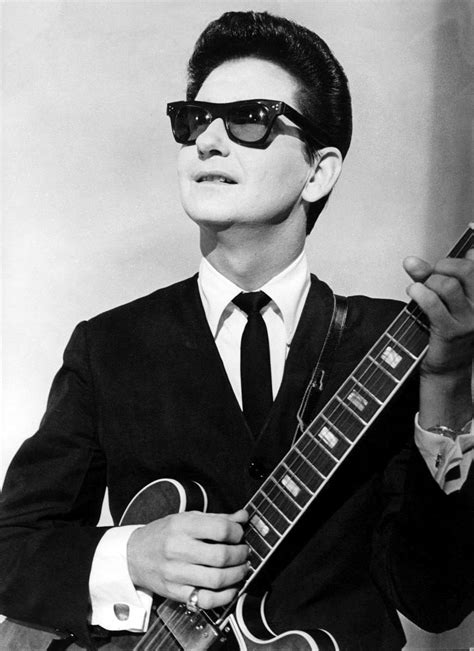by Matt Bailly, Integr8Research.com Oct. 3 2017
.
This post is the first in a series exploring how changing technology impacts radio listening, music consumption, and radio’s role in introducing listeners to new music.
As clock radios, stereos, and Walkmans disappear, The Amazon Echo and Google Home have given new hope to programmers for bringing local radio back into listeners’ homes. While screen-driven smartphones and tablets have proven well-suited to the endless exploration Spotify and YouTube enable, smart speakers seem perfectly suited to radio:
- Because they’re powered by voice-commands, listeners have to know what they want to hear and how to ask for it. In theory, that gives strong local radio brands a head start. There isn’t a screen filled with endless competing choices.
- Since they’re designed to play in the background while users do other things, smart speakers also seemingly pair perfectly with radio’s hands-off, hassle free approach to providing listeners a music soundtrack.

Are the bets we’re placing on Alexa and her friends actually supported by what people are doing?
Furthermore, how are these new technologies and listening options changing listeners’ relationships with their local radio stations, especially in introducing listeners to new music?
To explore this topic, we conducted 3,140 online interviews with 15- to 39-year-olds who are partisans to a local CHR, Rhythmic CHR, Urban, Alternative, or Country station. It’s not a representative sample of all Americans, but it is a solid snapshot of the radio listeners most relevant to new music radio stations. We then asked them about what devices they own, what services they use to hear music, and where they hear new music first.
Before tackling the question of whether or not smart speaker owners are using them as modern-day radios, let’s quantify the problem of people no longer owning traditional radios outside of their cars .
Here are three reasons why the problem is worse than you thought:
1) AM/FM radios really are vanishing. While traditional AM/FM radios remain ubiquitous in almost every vehicle, several studies have noted that traditional radios are no longer stock items in the homes of many younger consumers. How bad is it? The vast majority (87%) of the 15- to 39-year-olds we interviewed own a car with an AM/FM radio. However, only 43% have a traditional radio at home or at work and a scant 16% own a portable radio. Together, only 48% still own a radio other than in their car.

2) People who don’t own radios are less likely to stream local stations. Many broadcasters assumed that as traditional radios disappeared, listeners would simply use their smartphones as 21st century transistor radios, whether through a station’s own app or aggregators such as TuneIn and iHeartRadio.
Unfortunately, that’s not happening.
READ MORE HERE








With this article in mind I tried to tune in the new Canucks station Sportsnet 650 to find they are not on tunein or internet radio services. Apparently their internet signal is a proprietary one that can only be used on their app.
I am not a fan of downloading an app for every station I want to listen to, not a good move for them but I assume they just inherited it from CISL.
Try buying a portable radio in a Vancouver store. You’ll get puzzled looks. I’ve been trying to buy a replacement for my little Grundig. Nothing.
Try London Drugs for a Portable Radio Panasonic still make them
When I see nearly every “Young’un” constantly looking at Their smart phone the Radio future is rapidly changing , the Ads seem to increasing by the month and the Sports stations seem to be full of Presenter Trios who constantly interrupt and talk over each other which makes Me tune out or go to CBC !
Mike